If you are looking for a fun activity that includes some science, engineering, and math, try this STEM zip line challenge. I decided to incorporate this into some Easter fun using plastic Easter Eggs. However, you can use ANYTHING (rocks, blocks, small toys ) to adapt this activity. Even better, you can incorporate it into any holiday theme, math lesson, or a science class!
So, how do you get started in this zip line activity?!
Let’s delve into the challenge right now!
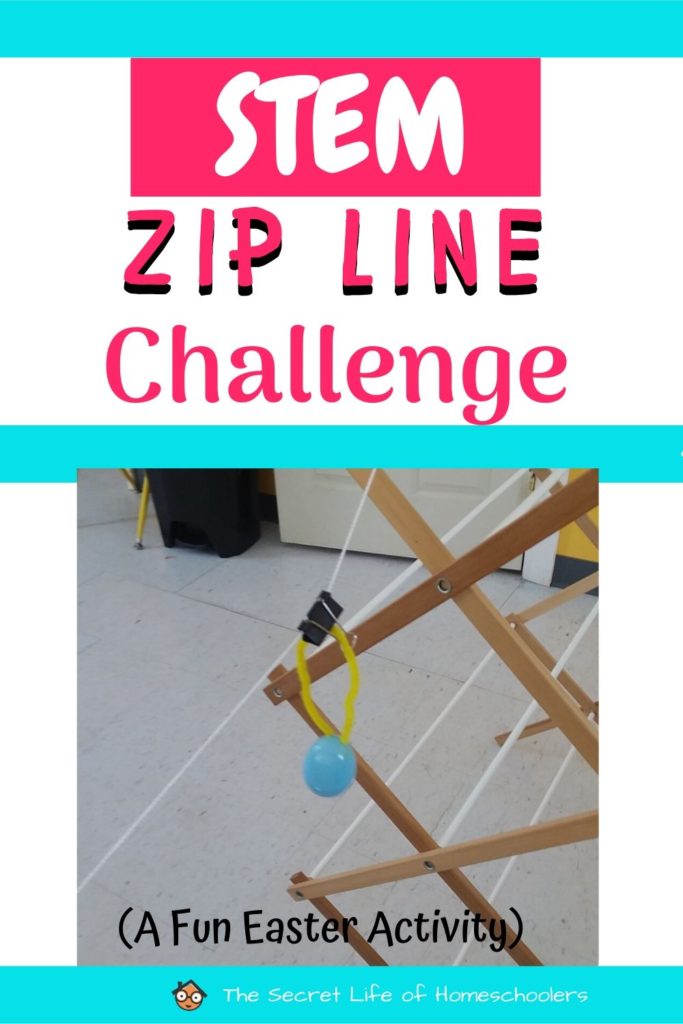
STEM Zip Line Challenge
The first thing you need to consider for this challenge is your purpose.
- Is it for fun?
- Do you want the kids to work on critical thinking skills?
- Are you using this for math, science, or engineering lesson?
- Do you want it to be a fun team building activity?
By starting with these questions, you can better decide on the materials you will use. For example, if you want to use this STEM activity to teach the science of ziplines, you may just give the kids a little bathroom cup right off. On the other hand, if you want the kids to be challenged and work on engineering skills, they may have to construct the “harness” for themselves.
So for this challenge, I wanted the kids to use critical thinking, engineering, and math skills as part of a fun Easter theme. Therefore, here are the materials I chose.
Materials Used for this Easter Zip Line Activity
- Plastic Easter Eggs
- Pennies
- 18″ piece of yarn
- Medium binder clip
- Paper clip
- Tape (invisible tape)
- Pipe cleaner
- 8.5″ X 3″ strip of paper
- String for the zip line and some way to attach it between two points.
What is the Challenge?
For this Easter STEM challenge, the kids were to build something to transport the plastic Easter egg down the zip line.
In other words, this is the engineering part of the challenge.
The kids were allowed to use only the materials from the list. However, they didn’t need to use ALL the materials. They were also allowed to cut, bend, fold, etc. any of the supplies to make their contraption.
The Zip Line Challenge in Action
First, you will want to show the kids the zip line set up in the room. The kids will have a better understanding of how steep and long it is.
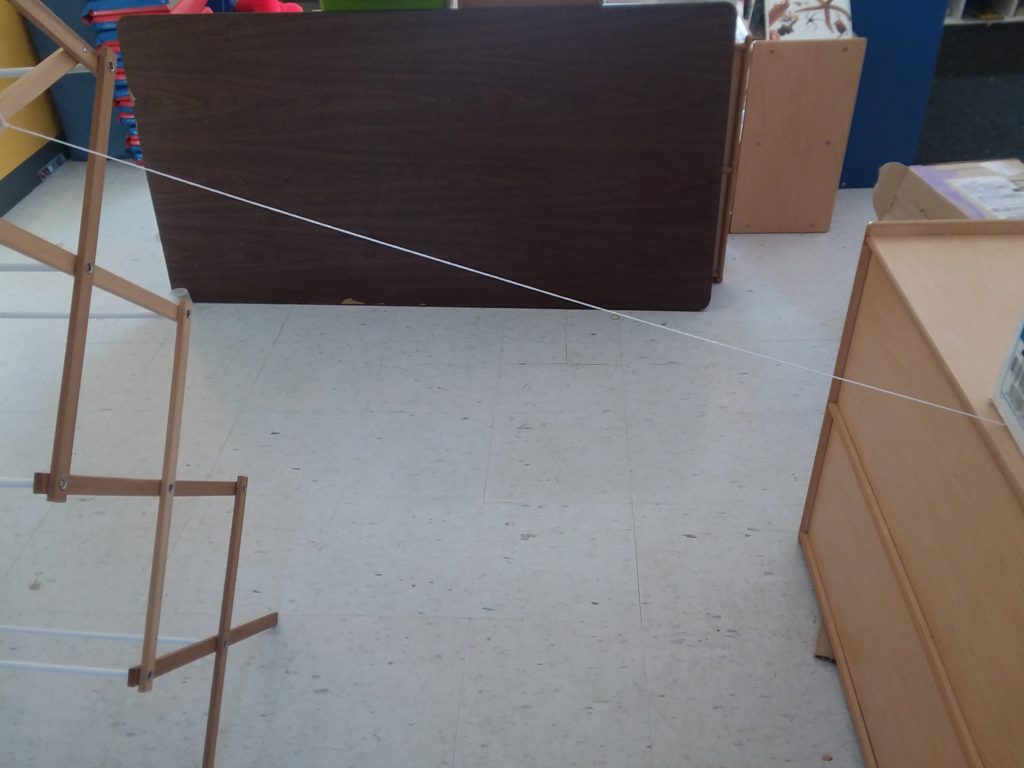
Second, give each kid, or group, the materials for the challenge.
Next, allow the kids to get to work. Give them time to plan and try things. Remind them to use their materials wisely because these are all the materials they will get.
Once everyone has something built to hold their Easter egg, allow the kids to come and test it on the zip line.
How did they do?
Analyzing the Results of the Zip Lines
Now, if the Easter egg didn’t make it down the zip line or their “harness” wouldn’t hold the egg, have the kids go back and try something else. The kids are acting like scientists, after all, and scientists test and retest their ideas until they get the results they want.
Some kids may have succeeded the first time. Have those kiddos look at why it worked. They can even compare if their egg worked as well as they thought it would. You may also want them to think of a way they could make it better.
Next Step in the Zip Line STEM Challenge
So the kids got the eggs down the zip line. Now what?!
The kids used the engineering skills to get the zip lines to work. Now it is time to incorporate MATH.
Math
Depending on your age group, you will approach it differently. You have two math concepts you can incorporate:
- Time
- Angles
Time
One way to incorporate time is by using a stopwatch. Kids can time how fast each egg takes to get to the end of the zip line. After, they can use their math skills to figure out how much faster or slower the eggs were.
From here, kids can decide if they want to change their design to make it go faster.
My kids tested out a couple designs to see which was faster. My son tried using a paper clip instead of the binder clip. He also tried running the egg down the zip line on the opening of the binder clip instead of the smooth part. He got different results with each.
Angles
To begin, you may want to set up a zip line for each kid or group. It will make it easier for kids to complete this part.
If you have older kids, you can take a look at angles. I would start off by measuring the angle of the zip line and then have the kids test different angles to see how it affects their egg going down the zip line.
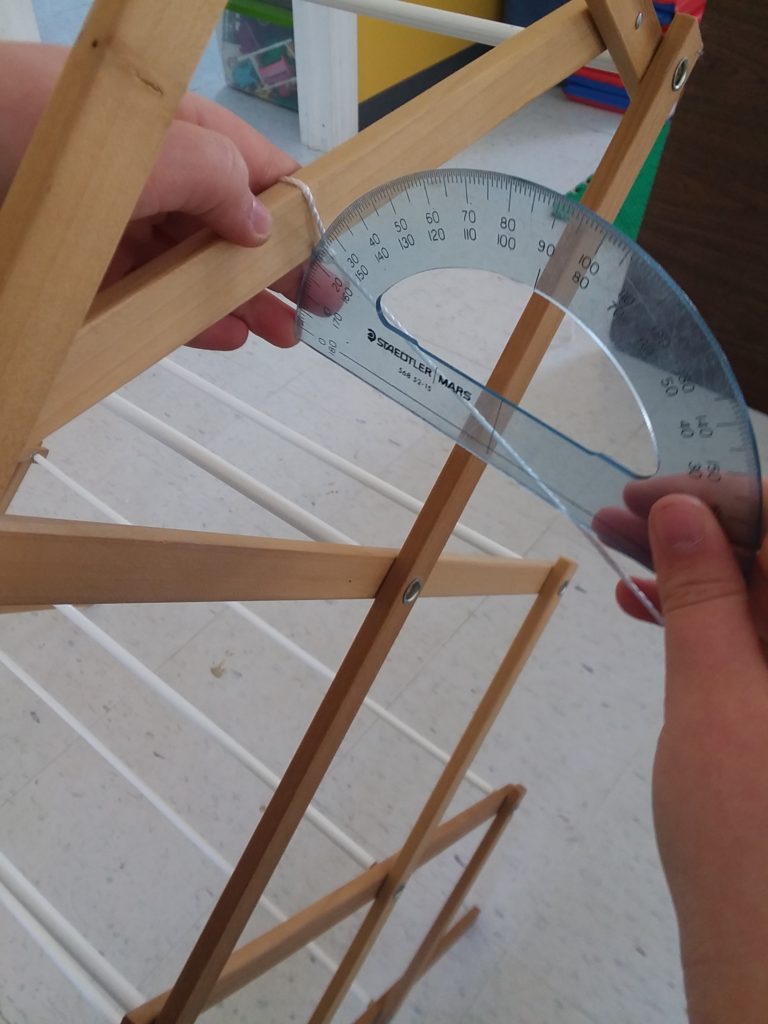
Did some angles slow down your egg? Or did some speed it up? Does a certain angle keep your egg from moving at all?
By trying out different angles kids can better understand why some eggs may have done better than others.
My daughter discovered that her harness for the egg wouldn’t hold up well to very steep angles.
The Science of the Zip Line Challenge
What science is involved in zip lines?
Zip lines deal with PHYSICS.
On a basic level, a zip line is a pulley. And what are pulleys? They are simple machines. Think back to your early years in school. Don’t you remember learning about simple machines at some point in elementary school?! Well, a zip line is an example of a pulley system. Kids can definitely relate to that.
What other science concepts are behind zip lines?
Well, in this challenge, concepts like gravity and inertia are involved. Inertia is a law of physics that states an object will stay at rest until some kind of force acts upon it.
So, remember the angle experiment above? Here is where science comes in. Because of gravity, the egg will move down the zip line if it is at the correct angle. If the egg is at the wrong angle, gravity will not move the egg down the zip line demonstrating inertia. Pretty cool, huh?!
I need to mention that the weight of an object is a factor in the movement, too. In this case, the weight of the egg and harness is a factor in the zip line. Hopefully, the kids realized that hence the pennies in the materials list.
Final Thoughts
My kids discovered, after making different harnesses for the egg, that sometimes the egg moved better down the zip line without weight in it. It moved smoother. Other times, it did better off with more weight.
Allow your kids to experiment with different harnesses, weights, and ways to attach the harness to the zip line. Different combinations will produce different results.
***If you love STEM activities you might also like Lego Balloon Cars: A Fantastic Way to Teach STEM, Build the Best Easter Bunny Boat: A STEM Challenge and The Challenge is On: A STEM Tower Challenge ***
The zip line activity is perfect to add to your homeschool or your classroom. Kids will have fun and incorporate engineering, math, and science skills along the way. You can even sneak this into a holiday theme. We did Easter Eggs for Easter, you can easily incorporate it into other holidays, too. Maybe a leprechaun needs to reach the pot of gold or you can transport a present down the zip line at Christmas.
There are so many ways to incorporate this zip line STEM activity into your curriculum or school year. Give it a try today.
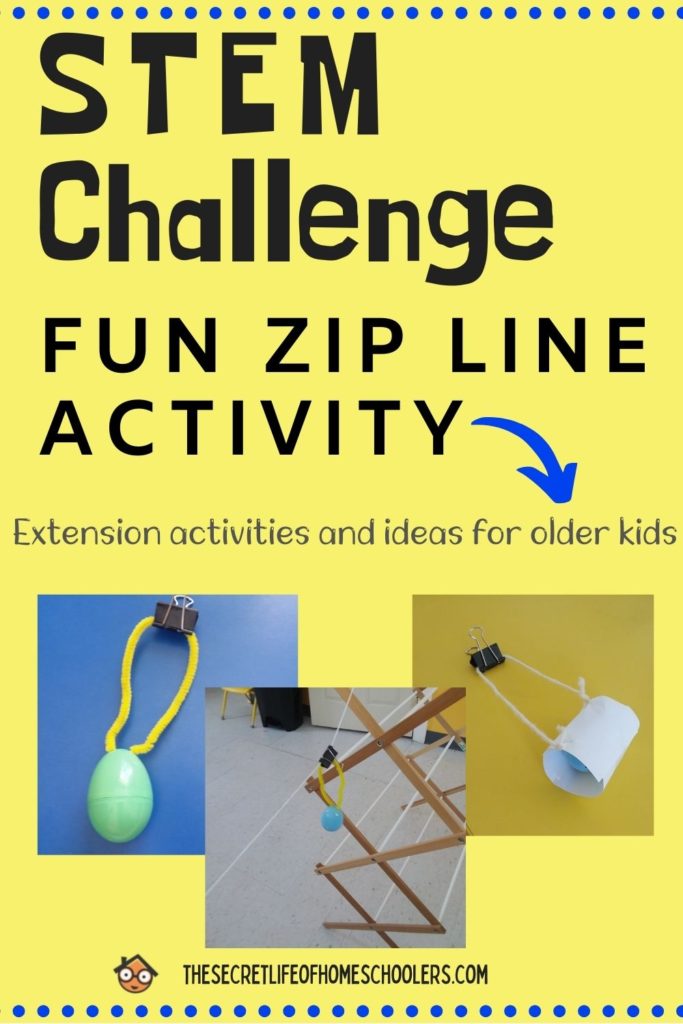

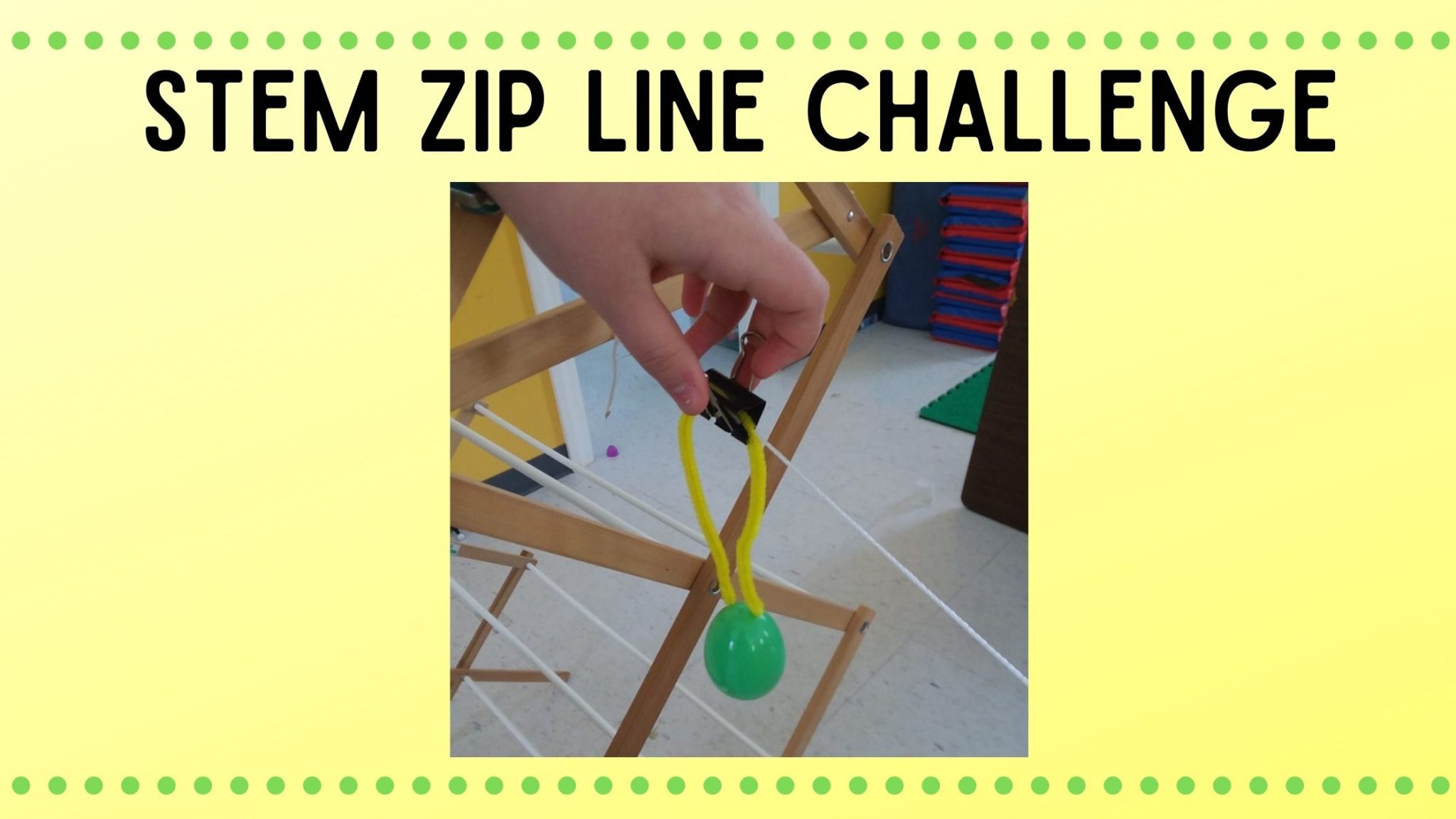
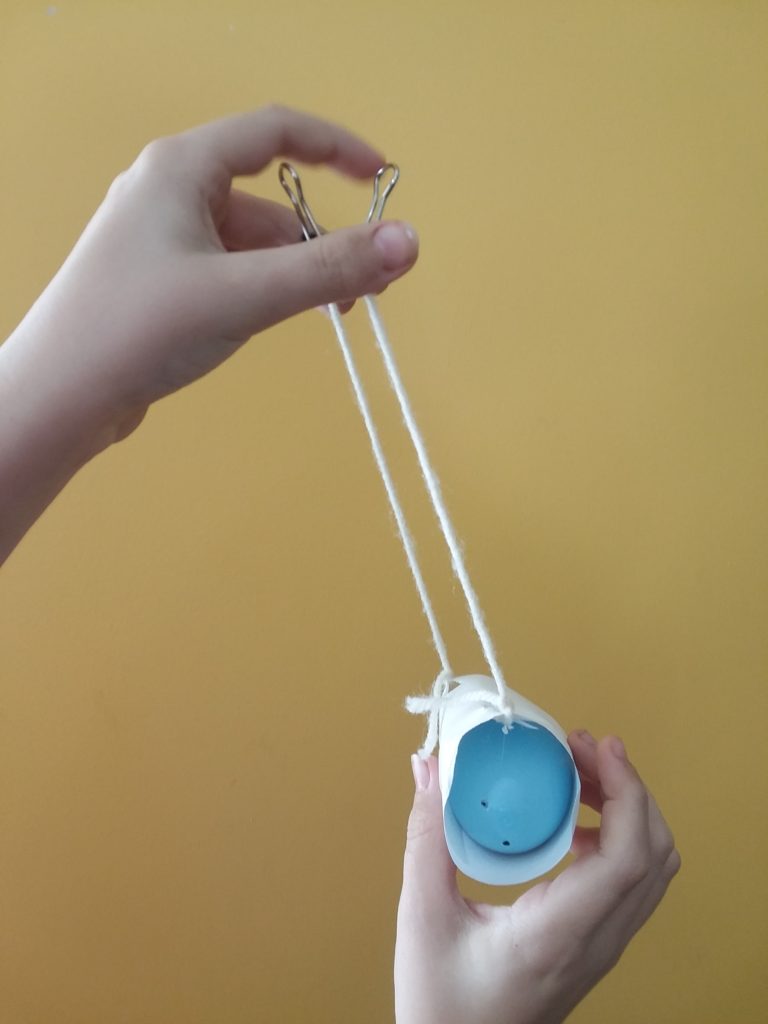
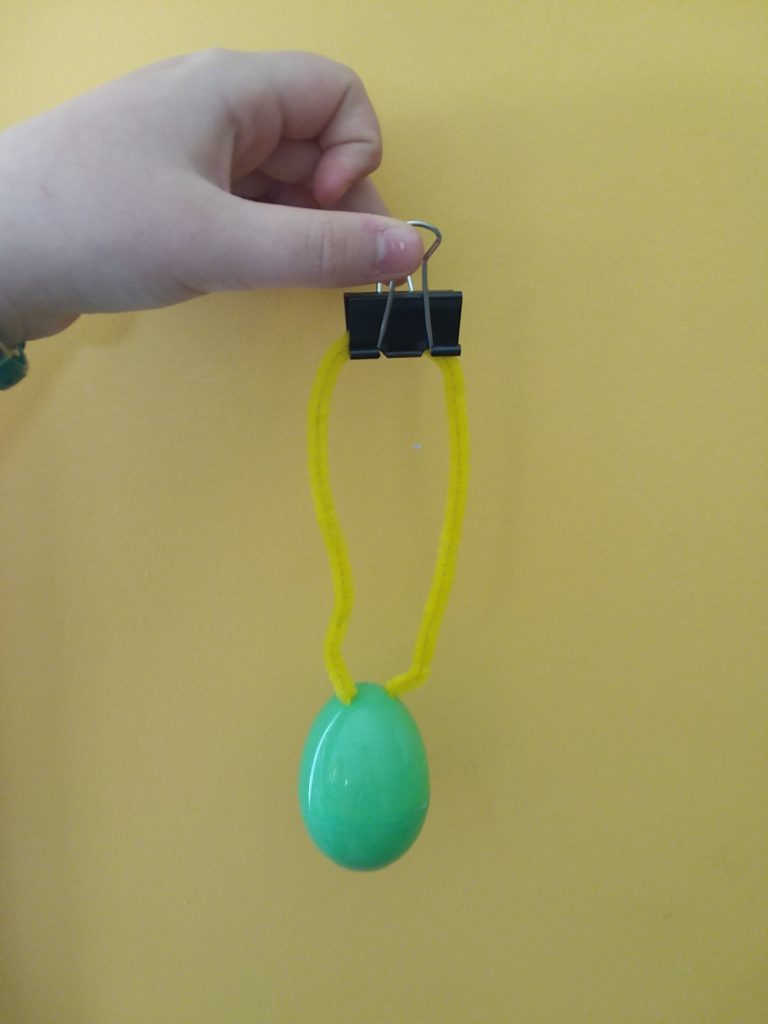
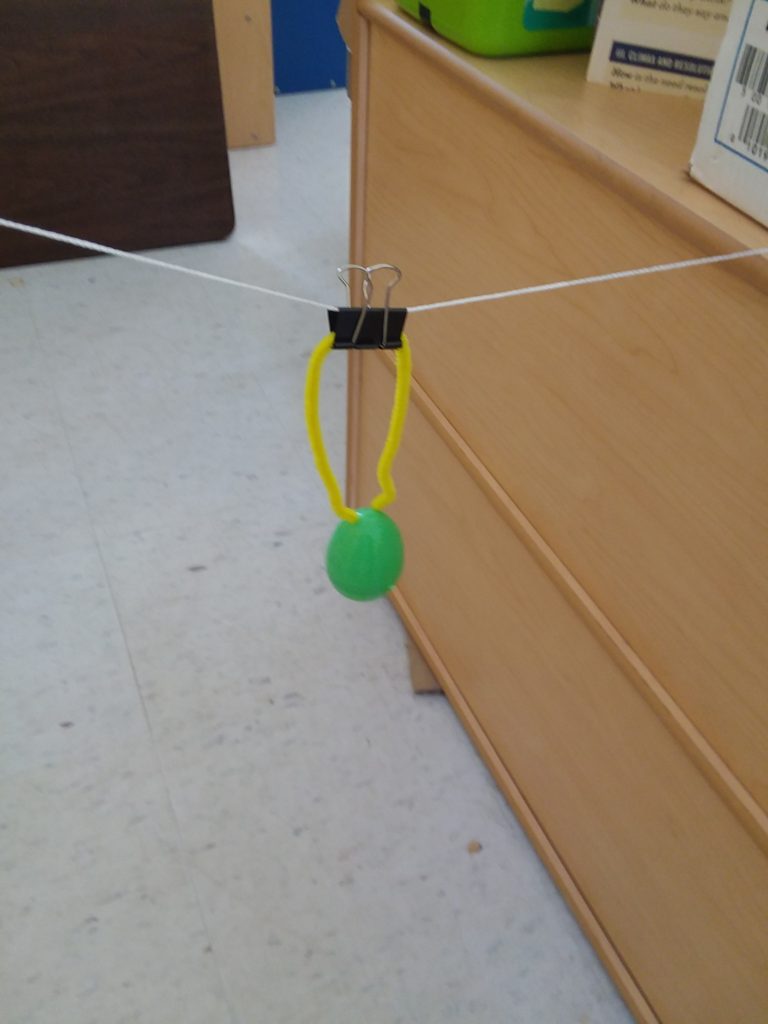
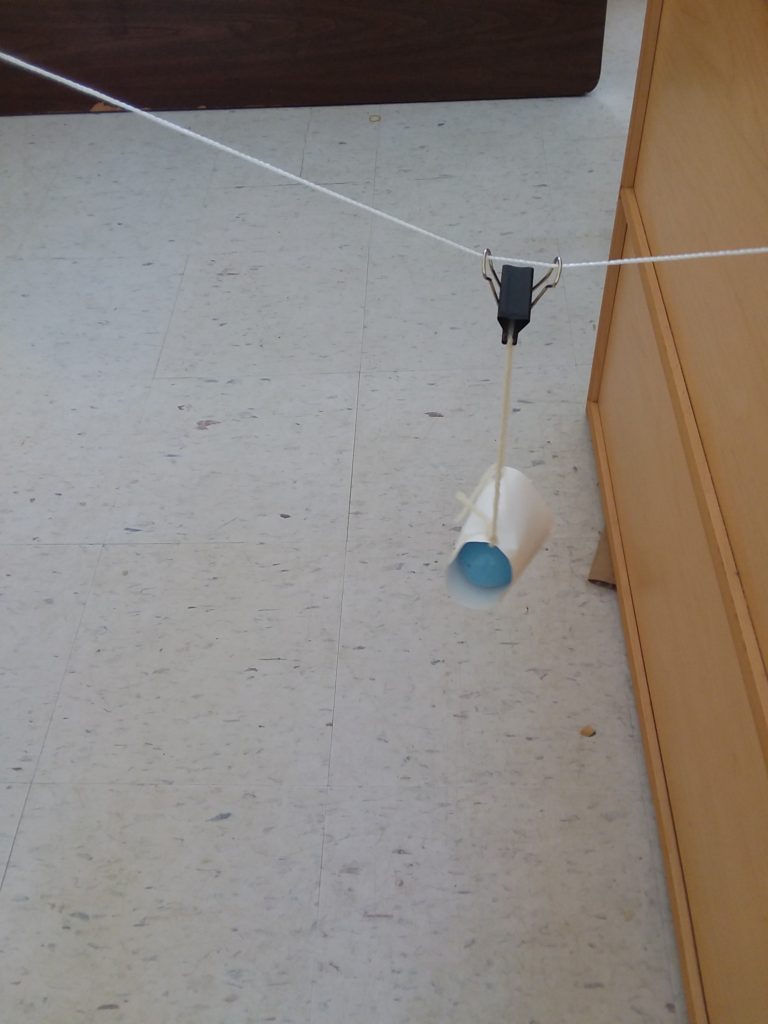
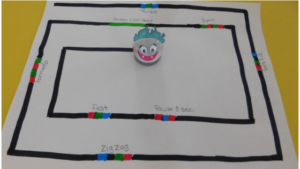


Great activity! We will have to trybthat sometime!
Thank you! I love have easily you can make this activity easier or harder depending on the age of the kids.